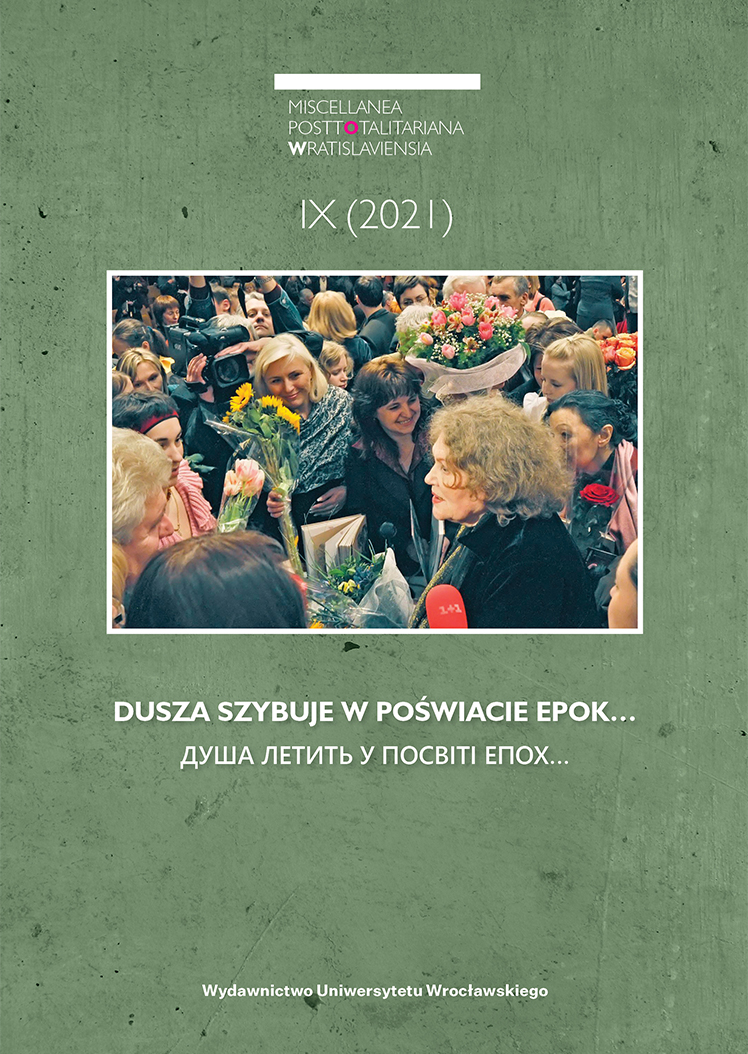

Artykuły

The author considers the strategy of silence in the works of the leading Ukrainian poet Lina Kostenko (born in 1930), a representative of the rebellious generation of the Ukrainian sixties, is considered. Her first (1961–1977) creative silence dates back to the years of totalitarianism when there were strict conditions of censorship; the second one (1999–2010) was already at the time of Ukraine’s independence, and it represents the communication crisis between the writer and authorities as well as writer and reader. The phenomenon of silence is interpreted as a behavioral strategy burdened by external circumstances, and in the case of Lina Kostenko — as communicatively significant and strategic silence. It is emphasized that silence as a “missing presence” of the writer in society stands out among other behavioral models that “work” on reputation, with its particular ambiguity. This prolonged form of challenge, having the “nature of keeping distance” (Martin Heidegger) by an author from authorities and a reader, maintains a “curve” of interest in him. Therefore, the periods of Kostenko’s silence are marked by a particular intrigue: they are perceived as a certain challenge to society, a kind of marker of the artist–power relationship when it is impossible to express one’s uncompromising position other than with silence. Actually, her “principled non-publicity,” which she interpreted as “unnecessary vanity” (which resulted in refusing interviews, participating in literary events, etc.), has other deeper motivation. By looking for analogs of a similar behavior model in the world literature history, the researcher compares the silence of Lina Kostenko with the literary silence of Paul Valéry and finds both similarities and differences.